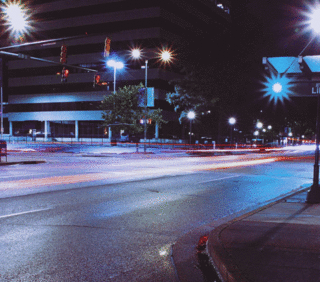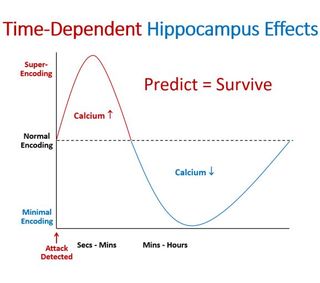Memory
Why Christine Blasey Ford Can’t Remember How She Got Home
Time-dependent effects of stress and trauma on the hippocampus and memory
Posted October 6, 2018
Note: This is my second post of two on the memory science relevant to Christine Blasey Ford’s reported memories, and those of all survivors of sexual assault and other traumas. The first is here.

On Monday October 1, Republican senators released “Analysis of Dr. Christine Blasey Ford’s Allegations,” a memo written by Rachel Mitchell, the prosecutor they hired to question Christine Blasey Ford and review other evidence. Ms. Mitchell’s “analysis” includes descriptions of Ford’s memories as not “consistent,” lacking “key details,” and uncorroborated by people she said were at the “party.”
In the final two weeks of September, many Americans learned from the media (e.g., USA Today, Rolling Stone, Vox, NBC News, NPR) the distinction that memory researchers make between “central” and “peripheral” details, terms that reflect the commonsense understanding that we remember things that had significance to us and got our attention.
Many people have also learned that stress and trauma greatly enhance the differential storage of central over peripheral details, and that the central details of traumatic experiences can get burned into our brains for the rest of our lives. But most people already knew that too, even if they hadn’t stopped to think about it.
These past few weeks, I’ve tried to help with that learning, by talking with reporters and sharing the expert testimony on trauma and memory that I could have provided to senators and the country, which was published by Scientific American and here on my blog. There I explain central versus peripheral details, that stress amplifies their differential encoding and storage, and how sexual assault survivors – like traumatized soldiers and police – may protect themselves by clinging for years to superficial descriptions of events, which keep the most disturbing details out of their minds. (If you're at all interested and have time, I highly recommend reading that article/post first, because it has great information and lays a foundation for this one.)
Now, I would like share some very important scientific knowledge about stress and memory that, with two exceptions, has not been shared by the media.
Even among scientists who study memory, many are not yet aware of this knowledge, and it’s certainly not intuitively recognized by the rest of us. But it is critical to understanding a large gap commonly found in the memories of those who have suffered trauma, including, apparently, Ford.
No, That's Not a "Detail"
Of all Ford’s memory gaps, including for what Mitchell calls “key details of the night in question,” her compete inability to recall how she got home is the only one that Mitchell calls “important." Indeed, she goes further, writing, “Perhaps most importantly, she does not remember how she got from the party back to her house,” and claiming, “Her inability to remember this detail raises significant questions” (p.3, italics added).
How Ford got home is not a “detail.” Rather, her return home was a series of events, each with many details. As I will show, this more accurate and precise description allows us to make good use of what science has revealed about the time-dependent effects of stress on memory.
Time-Dependent Effects: Not Obvious or Intuitive
The distinction between central and peripheral details is intuitive and commonsensical, and so is the reality that stress and trauma enhance the differential storage of central details over peripheral ones.
But most people, and even some memory researchers, don’t understand that the impacts of stress and trauma on memory change over time.
When we’re attacked or otherwise stressed, at first memory encoding and storage, especially for the central details, are enhanced.
The hippocampus immediately enters a super-encoding mode. As it does, central and even some peripheral details already in the buffer of short-term memory (of around 30 seconds) are selected for burning into long-term memory. As that super-encoding state continues (for around 5 to 20 minutes) the encoding and storage of central details, but not peripheral ones, are greatly strengthened. (To what extent depends on a variety of factors, including genetics and ovarian hormones.)
But once that initial super-encoding phase ends, stress impairs memory encoding and storage.
That’s because the hippocampus then enters a minimal-encoding mode. Depending on how long a sexual assault lasts, this phase of impairment and minimal encoding may arrive before or after the assault has ended.
Remarkably, during that minimal-encoding phase even some central details are not reliably being encoded or stored – and more complex information, like how things were sequenced in time, is unlikely to get stored at all. (See reviews by Diamond and colleagues, Zoladz and colleagues, and Schwabe.)
Knowledge of these time-dependent effects of stress on memory, especially the existence of that minimal-encoding phase of hippocampal functioning, is essential for understanding the memories and credibility of people who have experienced trauma – including military personnel, police officers, and sexual assault survivors like Ford.
Why Does the Brain Go Into Minimal-Encoding Mode?
I imagine you’re curious about why the hippocampus goes into that minimal-encoding mode. I can provide the scientific explanation without making it too complex.
First, it’s about brain cells and the mineral calcium. To enter and remain in the super-encoding mode, cells in the hippocampus must absorb much higher than normal amounts of calcium from the fluid surrounding them. But that same calcium, if it stays too long inside the cells, could kill them.

Second, it’s about learning and prediction. Our ancestors who survived passed down genes and brains that prioritize the storage of information that might enable our brains to predict things that are vital to our survival – like where to find our next meal and how to avoid becoming the next meal of a larger predator.
Imagine it’s 10,000 years ago, and, while drinking from a stream recently, your friends and you were attacked by a pack of wolves. They seemed to appear out of nowhere. A few of you were killed and those who survived were mostly lucky. Your brain would have entered the super-encoding mode the moment it detected the attack, then burned in things experienced moments before the wolves appeared: the silence of the birds stopping chirping, the appearance of that clump of bushes from where the wolves suddenly came running.
Your brain will burn into memory that image of dense bushes and that sound of silence, because detecting those sites and sounds could save your life in the future.
Iraq and Afghanistan veterans certainly get this. That pile of trash in the road could be hiding an IED. That tense-looking kid with a cell phone could be poised to trigger it. Prior attacks that maimed and killed their buddies have burned in such little details, potential signals of an imminent blast. But back home, driving their daughter to soccer practice can be a harrowing experience, with every piece of trash and every nearby boy on a phone triggering fear and panic, even “irrational” speeding or road rage.
In short, the alterations that occur in each stress-induced phase of memory processing – in the first, strongly encoded central details and missing peripheral ones, in the second, even some central details getting lost – are indicators of adaptive brain functioning. Those alterations have been selected by evolution because they’ve helped us to predict, detect, and avoid future attacks, and because they protect our hippocampus from damage.
Implications for Ford's Biggest Memory Gap
With this knowledge, we can see that getting home from the party was not a detail but rather a series of events with many details, all of which happened while stress was having time-dependent effects on Ford’s hippocampus and its abilities to encode and store information.
It’s likely that soon after she escaped the house her hippocampus entered that minimal-encoding mode that both protects its cells from destruction and prevents those same cells from storing the details of events. It’s a state of the hippocampus similar to the blackout state that is caused by a sudden spike in the blood-alcohol level, which Kavanaugh and his friend Mark Judge may have entered before or soon after arriving at the gathering.
If so, that would explain Ford’s only reported memories of what she experienced after leaving the house. In her written and spoken testimony to the Senate Judiciary Committee, Ford said, “I remember being on the street and feeling an enormous sense of relief that I had escaped from the house and that Brett and Mark were not coming after me.” In her conversations with Emma Brown of The Washington Post, she recalled, “My biggest fear was, do I look like someone just attacked me?”
If the young Ford succeeded at hiding signs of the trauma she had just endured, that would explain why no one remembers picking her up and driving her home.
Finally, her relief at having escaped and her fear that someone might realize she’d just been attacked: those would be two highly significant central details, among the last to get in before her hippocampus, entering its own self-protective mode, lost its ability to store indelibly any of what came next.
Note: This is my second post of two on the memory science relevant to Christine Blasey Ford’s report of being sexually assaulted and Brett Kavanaugh’s confirmation process. The first – which clearly lays out processes of encoding, storage, and retrieval – is here.
References
Cadle, C. E., & Zoladz, P. R. (2015). Stress time-dependently influences the acquisition and retrieval of unrelated information by producing a memory of its own. Frontiers in Psychology, 6, 910.
Diamond, D., et al. (2007). The temporal dynamics model of emotional memory processing: A synthesis on the neurobiological basis of stress-induced amnesia, flashbulb and traumatic memories, and the Yerkes-Dodson Law. Neural Plasticity, 60803, 1-33.
Schwabe, L. (2017). Memory under stress: From single systems to network changes. European Journal of Neuroscience, 45, 478-489.
Slemmer, J. E., De Zeeuw, C. I., Weber, J. T. (2005). Don't get too excited: mechanisms of glutamate-mediated Purkinje cell death. Progress in Brain Research. 148, 367-390.
Zoladz, P. R., et al. (2017). ADRA2B deletion variant influences time-dependent effects of pre-learning stress on long-term memory. Neurobiology of Learning and Memory, 140, 1-81.
Zoladz, P. R., Kalchik, A. E., Cadle, C. E., & Lyle, S. M. (2014). Amygdala-induced modulation of cognitive brain structures underlies stress-induced alterations of learning and memory: Importance of stressor timing and sex differences. In A. Costa & E. Villalba (Eds.), Horizons in neuroscience research (Vol. 14, pp. 1-40). Hauppauge, NY: Nova Science.




